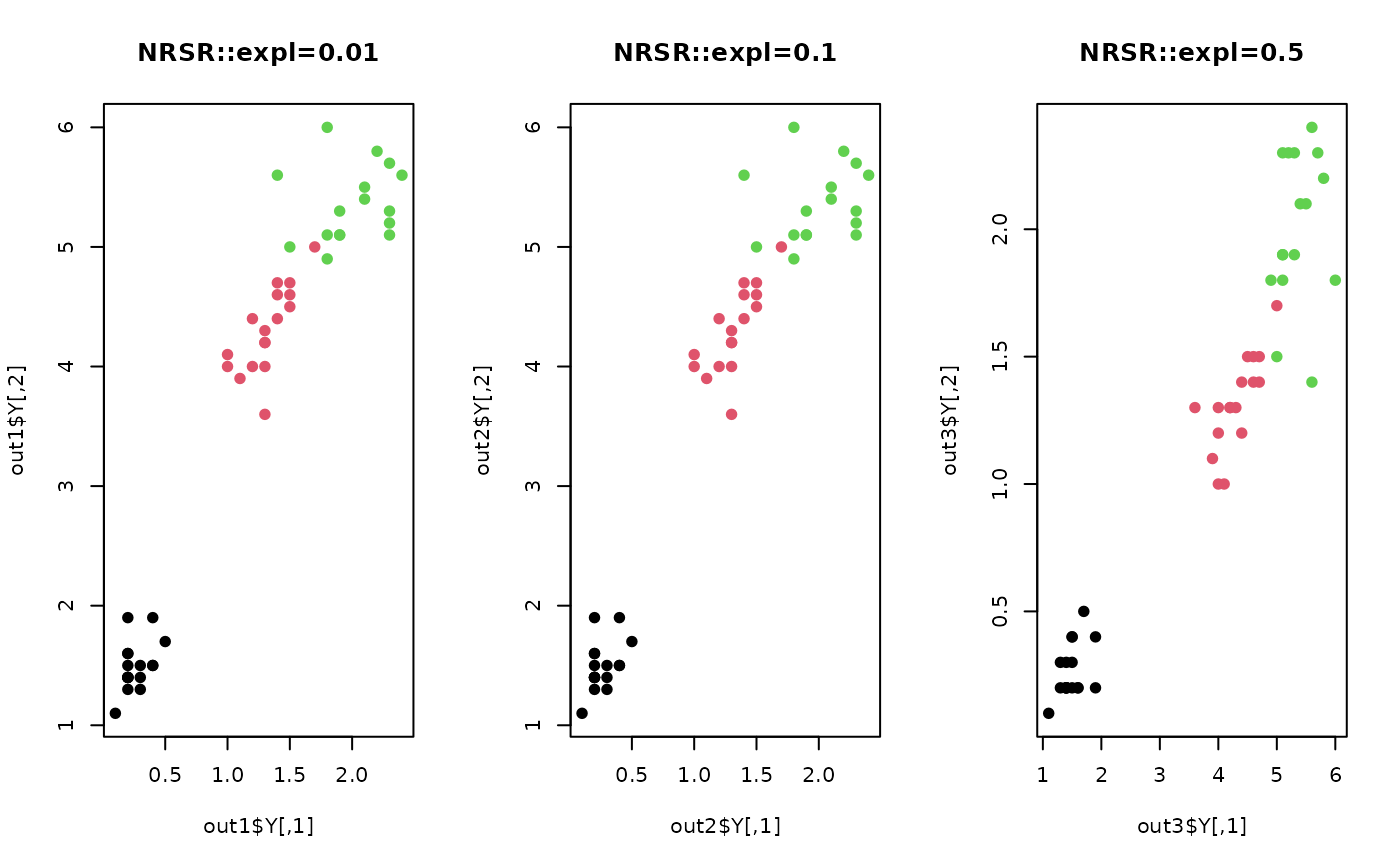In the standard, convex RSR problem (do.rsr), row-sparsity for self-representation is
acquired using matrix \(\ell_{2,1}\) norm, i.e, \(\|W\|_{2,1} = \sum \|W_{i:}\|_2\). Its non-convex
extension aims at achieving higher-level of sparsity using arbitrarily chosen \(\|W\|_{2,l}\) norm for
\(l\in (0,1)\) and this exploits Iteratively Reweighted Least Squares (IRLS) algorithm for computation.
do.nrsr(
X,
ndim = 2,
expl = 0.5,
preprocess = c("null", "center", "scale", "cscale", "whiten", "decorrelate"),
lbd = 1
)Arguments
- X
an \((n\times p)\) matrix or data frame whose rows are observations and columns represent independent variables.
- ndim
an integer-valued target dimension.
- expl
an exponent in \(\ell_{2,l}\) norm for sparsity. Must be in \((0,1)\), or \(l=1\) reduces to RSR problem.
- preprocess
an additional option for preprocessing the data. Default is "null". See also
aux.preprocessfor more details.- lbd
nonnegative number to control the degree of self-representation by imposing row-sparsity.
Value
a named list containing
- Y
an \((n\times ndim)\) matrix whose rows are embedded observations.
- featidx
a length-\(ndim\) vector of indices with highest scores.
- trfinfo
a list containing information for out-of-sample prediction.
- projection
a \((p\times ndim)\) whose columns are basis for projection.
References
Zhu P, Zhu W, Wang W, Zuo W, Hu Q (2017). “Non-Convex Regularized Self-Representation for Unsupervised Feature Selection.” Image and Vision Computing, 60, 22--29.
See also
Examples
# \donttest{
## use iris data
data(iris)
set.seed(100)
subid = sample(1:150, 50)
X = as.matrix(iris[subid,1:4])
label = as.factor(iris[subid,5])
#### try different exponents for regularization
out1 = do.nrsr(X, expl=0.01)
out2 = do.nrsr(X, expl=0.1)
out3 = do.nrsr(X, expl=0.5)
#### visualize
opar <- par(no.readonly=TRUE)
par(mfrow=c(1,3))
plot(out1$Y, pch=19, col=label, main="NRSR::expl=0.01")
plot(out2$Y, pch=19, col=label, main="NRSR::expl=0.1")
plot(out3$Y, pch=19, col=label, main="NRSR::expl=0.5")
 par(opar)
# }
par(opar)
# }